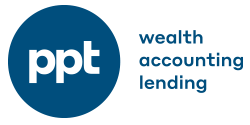Interest Rates, Mortgages and Surplus Income
Should people with a mortgage have a greater focus on making extra repayments?
The recent history of interest rates (the RBA target cash rate) in Australia makes for interesting reading – until the Melbourne Cup interest rate rose earlier this month, which took the target cash rate to 4.35%.
Not that long ago, the 4th of May 2022, the RBA cash rate target was lifted from the historically low level of 0.1% to 0.35%, the start of what we now know as a series of interest rate rises that sees us with today’s cash rate target of 4.35%.
What was surprising as we look back at the history of the cash rate is that we have to go back more than 11 years, to the 2nd of November 2011, to and a cash rate higher than it is now –we have had an extended period with a very low cash rates.
One of the great pieces of Australian financial wisdom, passed down across generations, is that making extra mortgage repayments is a great personal finance strategy. Having experienced an extended period characterised by low-interest rates, now with the increase in the cash rate, should people with a mortgage have a greater focus on making extra repayments?
The Relationships Between the Cash Rate Target and Mortgages – a type of ‘investment’ return.
If you have a spare dollar today, beside using it to buy 80% of a postage stamp, you currently have a choice to:
- Invest it in a cash-style account – perhaps earning 4.5% per annum before tax.
- Invest it in growth assets, like shares. In recent times this has earned a volatile return of about 10% per annum, perhaps a little less after tax if you are in a higher tax bracket.
- Make additional mortgage repayments. Before the last interest rate rise, Canstar reported the average standard variable rate as being 6.94% per annum – effectively, extra mortgage repayments earn you a ‘risk-free’, ‘tax-free’ return of 6.94% (most people will have a lower interest rate, I have used 6.25% in a calculation of a mortgage later).
- Make additional superannuation contributions. There may be the opportunity to claim a tax benefit on a personal or salary sacrifice contribution to superannuation, and the 15%superannuation tax environment means that people earning an average income or higher can expect a higher after-tax return in superannuation.
- An important starting point in this discussion is that the interest rate on the mortgage is the ‘return’ that extra mortgage repayments ‘earn’, and this return is risk-free (it is known and certain) and tax-free.
When mortgage rates were between 2% and 4% over an extended period of time, the ‘return’ from extra mortgage repayments did not seem comparatively attractive. However, with mortgage rates now 6% to 7% the ‘risk-free’, ‘tax-free’ return from making additional mortgage repayments is suddenly more attractive.
How can we evaluate the decision as to whether additional mortgage repayments, for so long a ‘gold standard’ of personal finance, is the correct approach?
Managing the Risk of Debt
Beyond discussions of ‘good debt’ and ‘bad debt’, it is worth acknowledging that all debt carries some level of risk. For example, debt makes life more challenging if you are unable to earn an income for a period of time (income protection insurance might help if you are unwell or injured, however, it will not be useful if you are unemployed).
It is not always possible to quantify that risk, as part of the risk is unknown future interest rates.
This discussion of debt as risk becomes a useful starting point in decision-making around extra mortgage repayments – a (roughly) 6% to 7% risk-free, tax-free return is attractive, and so making additional mortgage repayments until the debt is reduced until it poses a level of overall risk to your personal finance situation that you are comfortable with is a great initial strategy.
The Benefit of Additional Mortgage Repayments Early in a Loan
Thinking about the management of debt levels early in the life of a loan is supported by some interesting maths.
Warren Buffett often discusses a ‘margin of safety’ in analysing investments. Extra mortgage repayments provide a great ‘margin of safety’ around mortgages in three powerful ways:
- If you can make extra mortgage repayments, you know that you are not stretching yourself too far with the size of your mortgage – your extra repayments prove that you have some capacity to cope with any interest rate rises.
- Every extra mortgage repayment, particularly early in a loan, is powerful in reducing the loan balance. The lower loan balance will help you manage your mortgage in the future, for example if interest rates were to rise suddenly.
- In a situation of significant financial stress where you might be forced to sell your home, the lower the loan balance is, the greater the chance you have of selling the house for more than the value of the loan.
Let’s quickly look in more detail at the power of early additional mortgage repayments.
If we look at a mortgage of $500,000, with a 6.25% interest rate and no fees, the monthly repayments (calculated using the moneysmart.gov.au calculator) are $3,298 per month, or $39,576 over the year. 6.25% interest over the first year will be $31,250 in interest (in reality it will be ever so slightly less, given that the loan balance will reduce slightly over the year), meaning of the $39,576 annual repayment only around $8,326 will reduce the loan balance.
However, if you increase your mortgage repayments by $694 per month ($8326 per year), to $3,991 per month, 100% of the extra repayments will go toward repaying the loan balance. Increasing the loan repayment from $3,298 per month to $3,991 per month, a 21% increase in the repayment, doubles the rate at which the loan balance is reduced.
It does not Have to be One or the Other……
The decision to move beyond extra mortgage repayments still makes sense – the 6% to 7% risk-free, tax-free return is attractive, however, the returns from growth assets outside of superannuation or from additional superannuation contributions (made into a large growth fund) are likely to be slightly superior to the mortgage, although the returns will be volatile rather than risk-free.
As the mortgage decreases to a level of risk that someone is comfortable with, diverting some surplus cashflow to build growth assets is a reasonable strategy.
Equally, someone closer to retirement who is comfortable with the level of their mortgage might choose to make extra superannuation contributions with part of their surplus cashflow.
A More Aggressive Strategy – Debt Recycling
For those more comfortable with risk, there is the possibility of setting up and drawing down on a loan for investment purposes as the primary mortgage is paid down, a strategy known as debt recycling.
Conclusion
It is back – with recent interest rate increases and people now paying 6% to 7% interest on mortgages the generations-old financial wisdom of making extra mortgage repayments is back in vogue.
Once the mortgage is paid down to a level where the debt poses a comfortable level of risk, other strategies like building growth assets or extra superannuation contributions will make sense.
However, offering a 6% to 7% risk-free, tax-free return, extra mortgage repayments absolutely makes sense as a simple and powerful personal finance strategy.
Article provided by Investsmart
Want more information?
To discuss how this may impact your circumstances contact PPT on (03) 5331 3711.
DISCLAIMER: The material and contents provided in this publication are informative in nature only. It is not intended to be advice and you should not act specifically on the basis of this information alone. If expert assistance is required, professional advice should be obtained.


